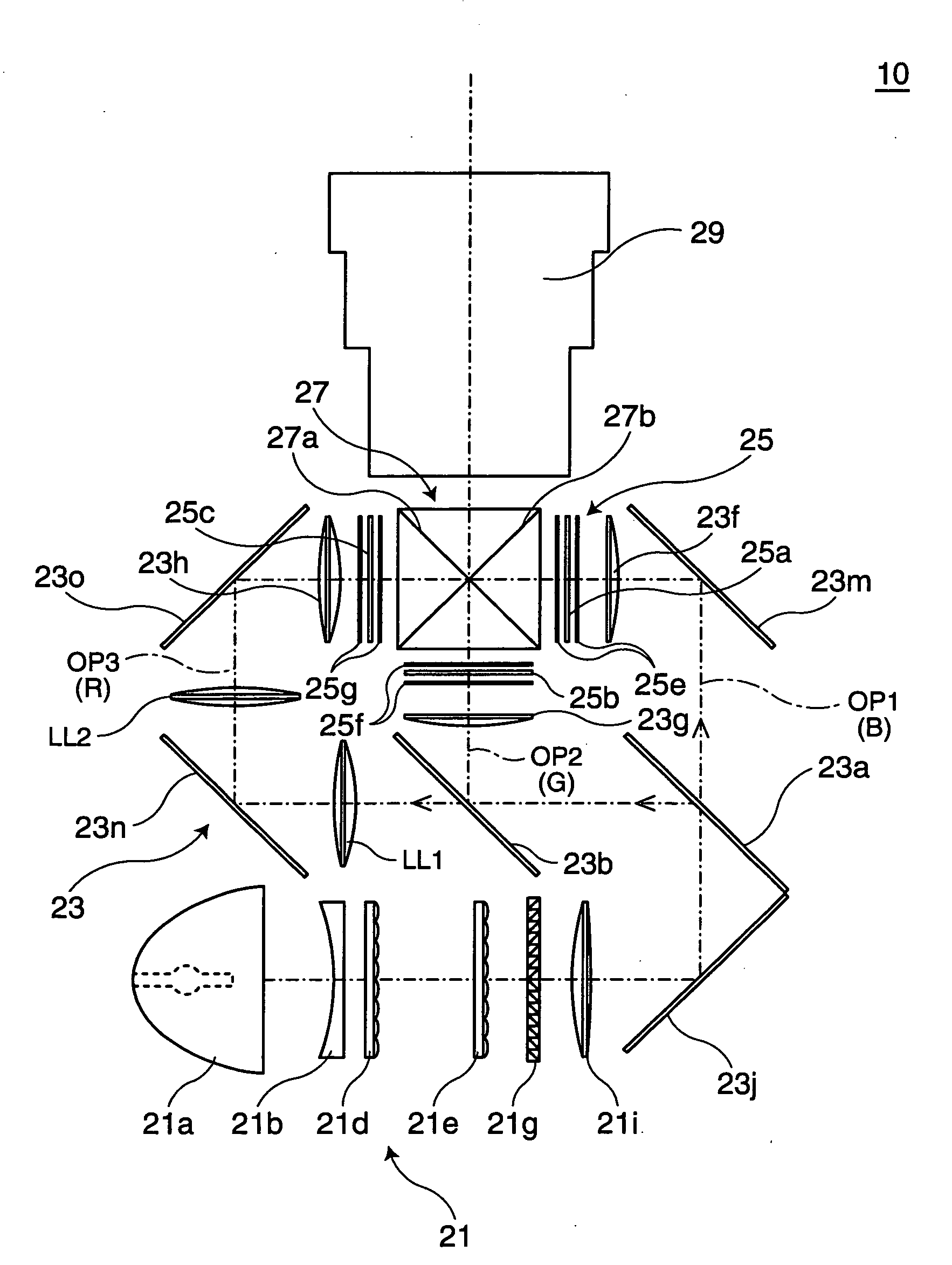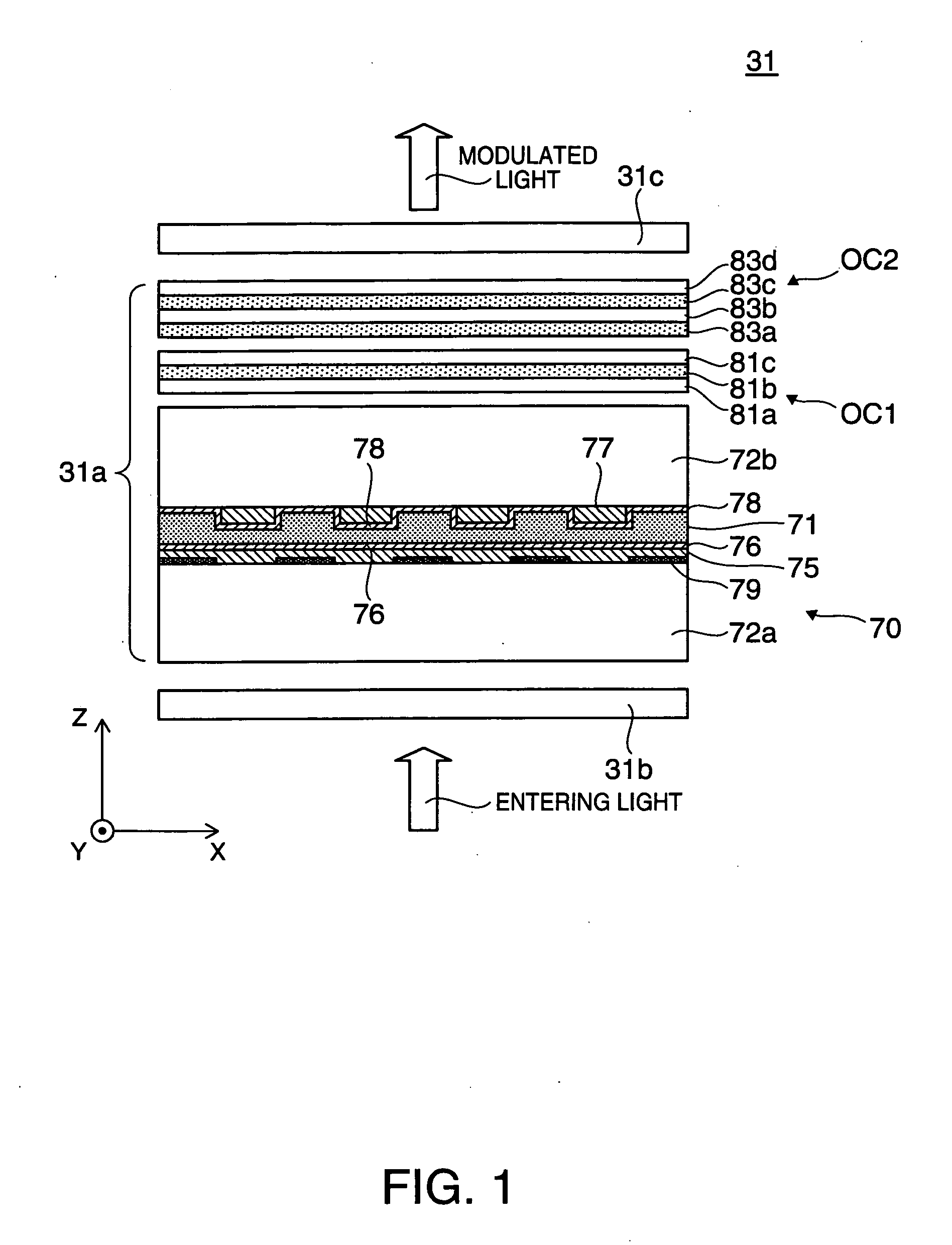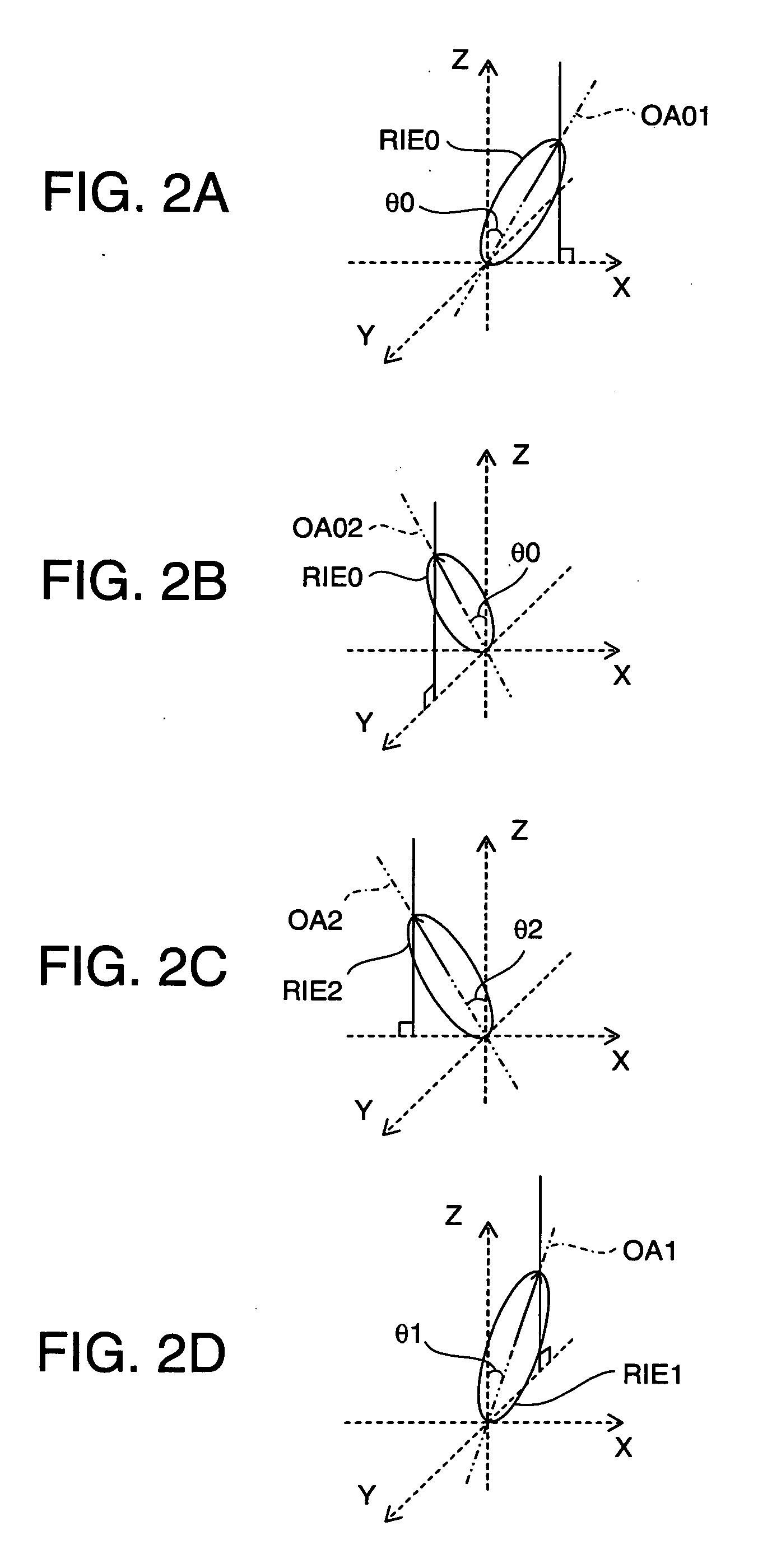Liquid crystal device and projector including the same
a liquid crystal cell and projector technology, applied in non-linear optics, instruments, optics, etc., can solve the problems of inability to obtain sufficient viewing angles and limited compensatory light entering in oblique directions, so as to improve light modulation of liquid crystal cells, reduce image contrast, and improve light control accuracy
- Summary
- Abstract
- Description
- Claims
- Application Information
AI Technical Summary
Benefits of technology
Problems solved by technology
Method used
Image
Examples
first embodiment
[0032]FIG. 1 is a cross-sectional view showing an enlarged structure of a liquid crystal light valve (light modulating device) as a liquid crystal device according to a first embodiment of the invention.
[0033]In a liquid crystal light valve 31 shown in the figure, a first polarizing filter 31b as a light entrance side polarizing element and a second polarizing filter 31c as a light exit side polarizing element constitute crossed nicols, for example. A polarization modulating unit 31a disposed between these first and second polarizing filters 31b and 31c is a liquid crystal panel which varies the polarization direction of entering light for each pixel in accordance with an input signal.
[0034]The polarization modulating unit 31a has a liquid crystal cell 70 which has a transparent first substrate 72a on the entrance side and a transparent second substrate 72b on the exit side with a liquid crystal layer 71 interposed therebetween. The liquid crystal layer 71 is constituted by liquid c...
second embodiment
[0051]A liquid crystal light valve as a liquid crystal device according to a second embodiment of the invention is now described. The liquid crystal light valve in the second embodiment is a modification of the liquid crystal light valve in the first embodiment, and the components not specifically touched upon are similar to those in the first embodiment and not repeatedly explained.
[0052]FIG. 5 is a cross-sectional view of an enlarged structure of the liquid crystal light valve in the second embodiment. In a liquid crystal light valve 131 shown in the figure, a third compensating element 183a constituting the second optical compensating member OC2 of the polarization modulating unit 31a is not formed by negative uniaxial crystal such as sapphire but by extended film having refractive index anisotropy similar to negative uniaxial characteristics such as TAC (triacetyl cellulose). This extended film exhibits relatively easily adjustable retardation and therefore is appropriate for ma...
third embodiment
[0055]A liquid crystal light valve as a liquid crystal device according to a third embodiment of the invention is now described. The liquid crystal light valve in the third embodiment is a modification of the liquid crystal light valve in the second embodiment, and the components not specifically touched upon are similar to those in the second embodiment.
[0056]FIG. 6 is a cross-sectional view illustrating an enlarged structure of the liquid crystal light valve in the third embodiment. In a liquid crystal light valve 231 shown in the figure, a compensating element portion 281a formed by an extended film having refractive index anisotropy similar to negative uniaxial characteristics such as TAC is included in the first optical compensating member 0C1 of the polarization modulating unit 31a. Similarly, a compensating element portion 283a formed by an extended film having refractive index anisotropy similar to negative uniaxial characteristics such as TAC is included in the second optic...
PUM
| Property | Measurement | Unit |
|---|---|---|
| refractive index anisotropy | aaaaa | aaaaa |
| refractive index | aaaaa | aaaaa |
| thickness | aaaaa | aaaaa |
Abstract
Description
Claims
Application Information
 Login to View More
Login to View More - R&D
- Intellectual Property
- Life Sciences
- Materials
- Tech Scout
- Unparalleled Data Quality
- Higher Quality Content
- 60% Fewer Hallucinations
Browse by: Latest US Patents, China's latest patents, Technical Efficacy Thesaurus, Application Domain, Technology Topic, Popular Technical Reports.
© 2025 PatSnap. All rights reserved.Legal|Privacy policy|Modern Slavery Act Transparency Statement|Sitemap|About US| Contact US: help@patsnap.com



